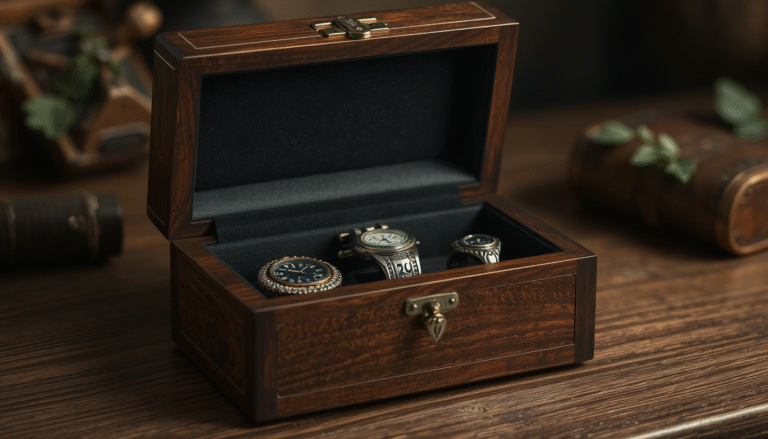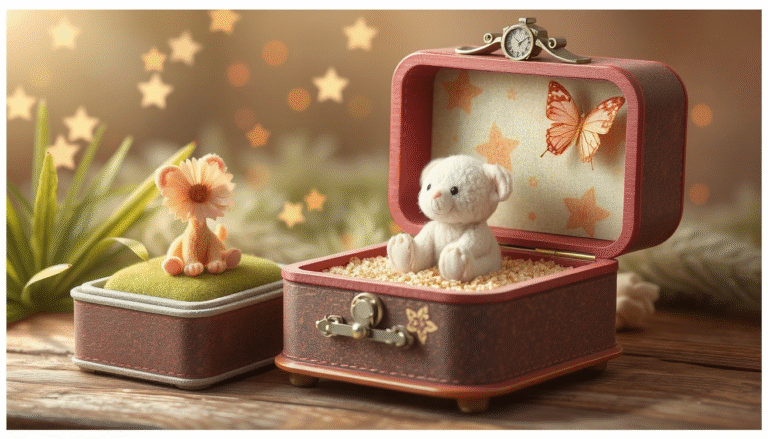The Bombay Company once thrived in shopping malls in the 1980s and 1990s. They sold designer furniture that was affordable, yet still looked chic in homes across North America. And guess what, they still feel special and well-made.
Here is a guide to everything you need to know. We’ll cover the company’s history, discuss how these jewelry boxes stand apart from others, guide you on how to tell the different types apart, value them and take care of them.
The Rise and Fall of a Decor Icon: The Bombay Company Story
The Bombay Company began with an idea. They wanted to reproduce old English furniture that ordinary folks could purchase from a catalog.
The company’s real breakout period was the 1980s and 1990s, when its stores started popping up in malls across the country. People knew these stores for their dark, glossy woods, brass accents and traditional look that didn’t break the bank.
Their products filled a void for consumers in search of traditional-looking furniture that didn’t require spending pricy antique sums. The combination of style and affordability became the brand’s hallmark.
But something began to shift in the 2000s. Giant stores and online shopping roiled The Bombay Company. They struggled to keep up with such change.
The company’s troubles got worse until they filed for Chapter 11 bankruptcy protection in 2007. They closed all their physical stores, which was sad for their many loyal customers.
Then somebody bought the brand name and the store has since been an online-only outfit. To collectors, though, the items they most covet were made before 2007, when the company had actual stores.
The Anatomy of a Classic: What Defines a Bombay Company Jewelry Box?
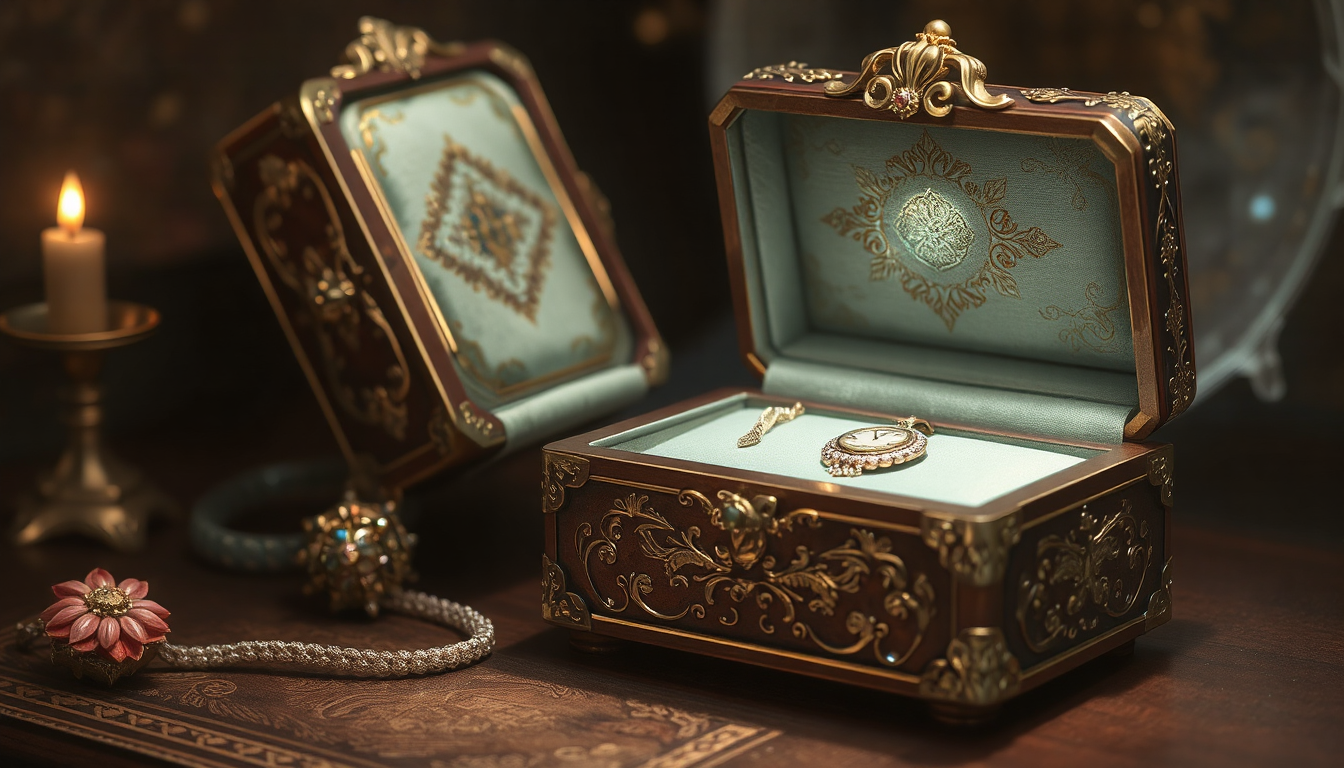
To really appreciate these jewelry boxes, you should know the materials and designs that made them stand out. Once you know what to look for, you can easily spot a real Bombay Company jewelry box.
Primary Materials
-
Wood: The most noticeable feature is the dark wood. Most boxes were made with cheaper materials inside but covered with rich-looking veneers. They often had mahogany and cherry finishes that gave a deep reddish-brown color. Some better models had swirly grain patterns that looked like the genuine mahogany’s distinct grain and color found in expensive antiques.
-
Hardware:Heavy bright brass was their signature look. This even extended to the drawer pulls, knobs, hinges, about the corner pieces -and often keys with locks. The weight and sheen of these metal parts gave the boxes heft and a sense of being well-made.
-
Lining: The interiors were made to shield jewelry. The interiors of most of the boxes were lined with soft felt in dark green, black or on occasion deep red. In place of a cotton, some models had a silk-like fabric instead.
Common Design Styles
The Bombay Company borrowed from a variety of traditional furniture styles for its inventory.
-
Neoclassical: This was probably their most common style. These boxes have architectural elements like columns at the corners and triangular tops. They focus strongly on symmetry. These designs follow the hallmarks of Neoclassical design, which was inspired by ancient Greek and Roman buildings.
-
Chinoiserie: Some of the rarer and more valuable designs include Chinese motifs. This style is characterized by black lacquered finishes decorated in gold powder paint with painted nature scenes depicting birds and flowers. The forms are often reminiscent of Asian pagodas.
-
Campaign/Trunk Style: These boxes resemble the type of little traveling trunks British military officers of the past travelled with. They frequently come with faux-leather straps, brass corner protectors and durable handles.
Identifying Marks
Here’s how to tell if your box of chocolate is legit. Check the bottom for a brand tag. And typically it is a gold or black sticker that reads “The Bombay Company.” A lot of labels from the 1990s and later also include the year it was made (such as “© 1997 The Bombay Company, Inc.”) and where it was made, usually Taiwan or the Philippines. On occasion this label is found inside a drawer or on the back.
A Collector’s Catalog: Identifying Popular Styles and Models
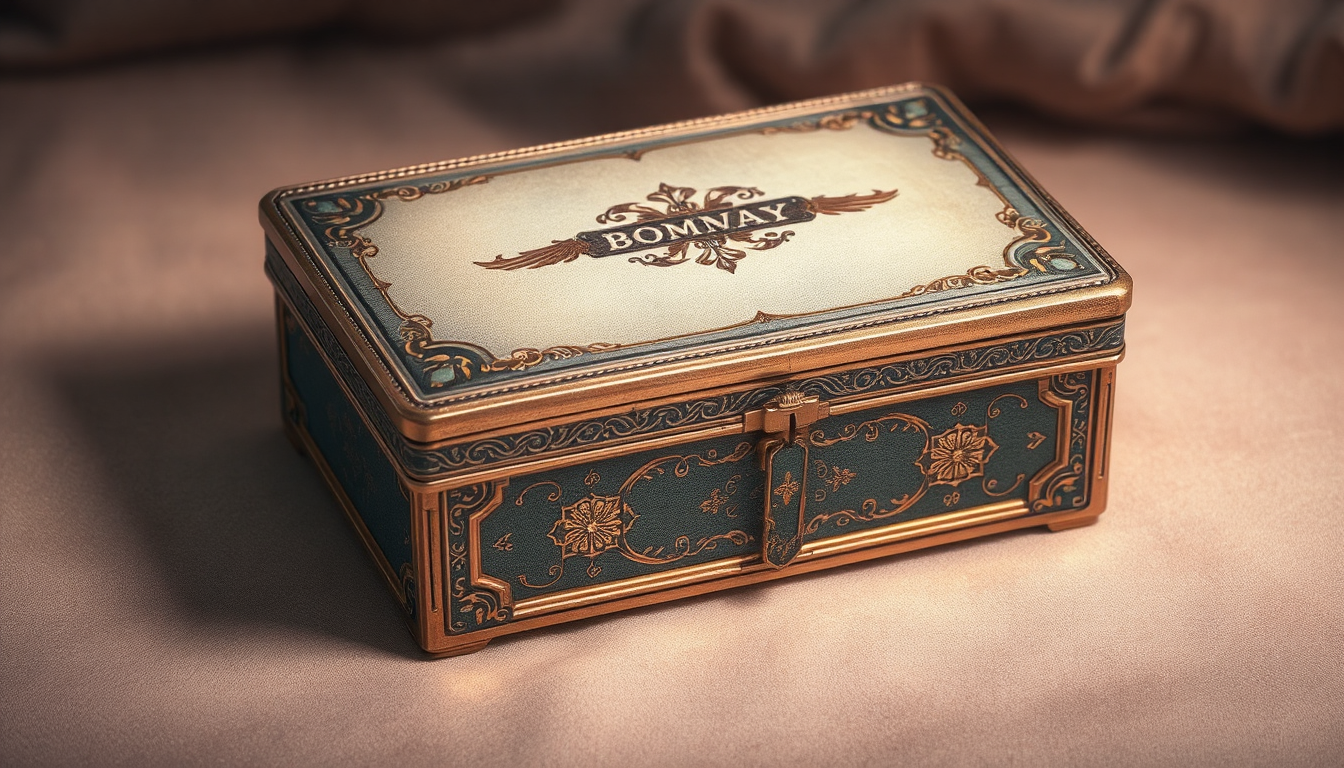
The Bombay Company offered a variety of styles, but a few lines consistently appear on the resale market. We looked at many listings to compile this guide to assist you in determining what kind of jewelry box you have.
This is a collection of information that’s difficult to pull together in one place.”
| Style/Model Name | Key Features | Common Era |
| The Miniature Armoire | A tall, upright design, often over 12 inches high. Features two side doors that swing open to reveal hooks for hanging necklaces. A central stack of drawers provides storage for smaller items. Often has a mirrored top lid. | 1990s – 2000s |
| The Neoclassical Chest | A rectangular, bureau-style box. Defined by architectural details like columns, a solid base, and often a lift-up top with a mirror. Typically has two to four drawers with polished brass pulls. | 1980s – 2000s |
| The Desktop Valet / Gentleman’s Caddy | Designed primarily for men’s accessories. Usually features a hinged glass lid to display watches and sectioned compartments for cufflinks, rings, and tie clips. Some models include a charging station cutout. | 1990s – 2000s |
| The Rotating/Swivel Box | A clever, space-saving design. Consists of multiple tiered, square-shaped compartments that swivel or rotate on a central axis, allowing access to different sections. | 1990s – 2000s |
| The Trunk-Style Chest | Mimics an antique travel or steamer trunk. Characterized by dark wood paired with faux leather straps, brass studs, and heavy side handles. A very masculine and substantial style. | 1990s – 2000s |
| The Musical Box | Typically a smaller box, often designed just for rings or a few precious items. When the lid is opened, a mechanical music component plays a classic tune. “Love Story” was a very common choice. | 1980s – 1990s |
| The Chinoiserie Box | A rarer and highly decorative model. Features black lacquered wood with hand-painted gold or colored motifs of florals, birds, and landscapes. The shape can be rectangular or have curved, pagoda-style lids. | 1980s – 1990s |
Appraising Your Find: How to Date and Value Your Jewelry Box
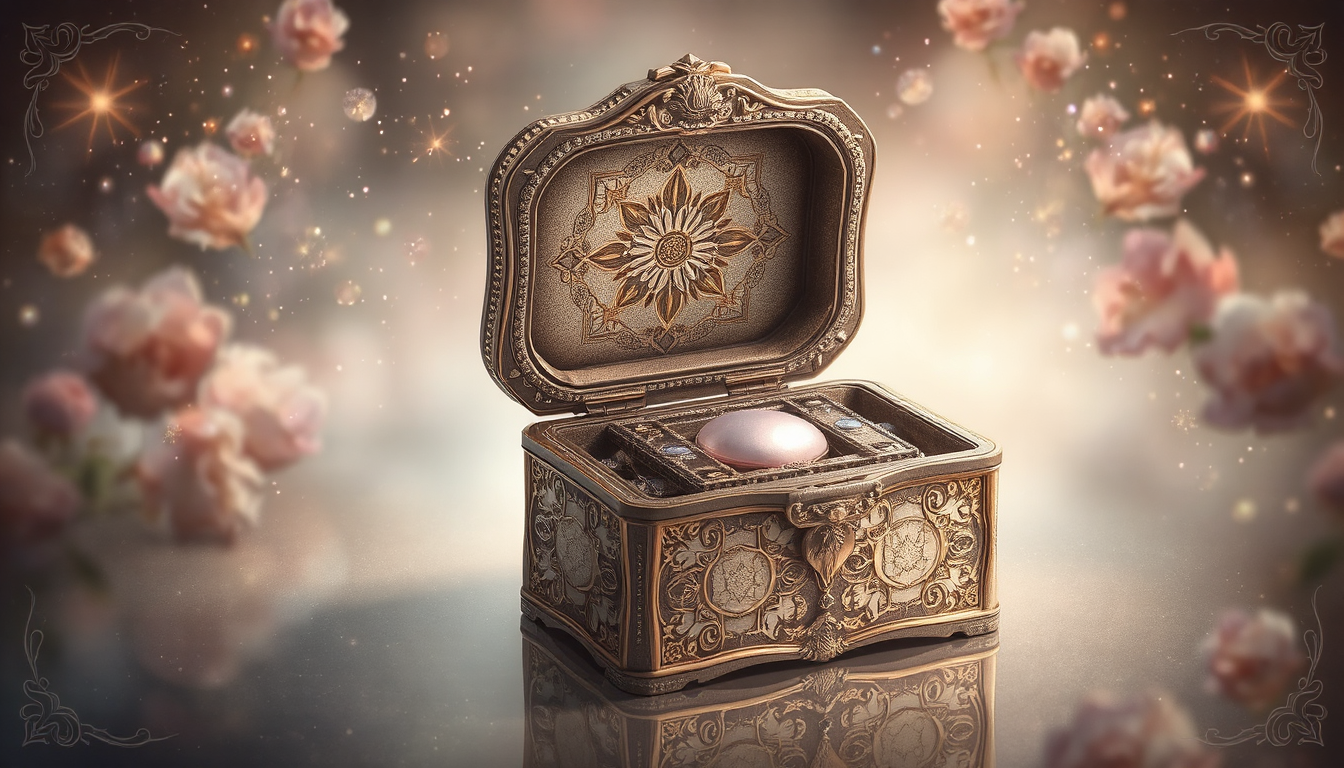
Many owners want to know what their Bombay Company jewelry box is worth. The value changes based on the current resale market.
Dating Your Box
Finding out how old your piece is should be your first step.
-
Check the Label: This is the easiest way. As mentioned, most boxes made from the early 1990s onward have the year printed on the label on the bottom of the box.
-
Style and Hardware: For boxes without a date, the style can give you hints. Earlier boxes from the 1980s might have simpler designs or different hardware compared to the fancier models from the late 90s.
What’s It Worth?
And remember, these were mass-produced items — not rare antiques. Instead, their appeal lies in their good engineering, nostalgic nature and condition.
Based on current market prices online, most authentic Bombay Company jewelry boxes sell for between 25 and 150. Smaller, common pieces like ring boxes sell for less, while large, detailed armoires in perfect condition might sometimes cost more.
Factors Influencing Value
Here are the top things influencing the price:
-
Condition: This matters most. Any box with absolutely no scratches, chips or peeling will always command the highest price. Dings, tarnish, or missing parts seriously tem the value. Pros Having the original key is great.
-
Size and Complexity:It’s as simple as this: The larger pieces are more valuable. A large jewelry armoire with lots of drawers and a few places for hanging necklaces is worth more than a small box with a single drawer.
-
Rarity and Style: Unusual designs are more desirable to collectors. A well-kept Chinese-style box or a large trunk-style chest will typically be worth more than a standard three-drawer model.
-
Functionality: All features should work as they should. Do the drawers slide smoothly? Does the music play clearly? Is the mirror in good shape? The price goes down if anything is wrong.
Preserving the Legacy: A Practical Guide to Care and Restoration
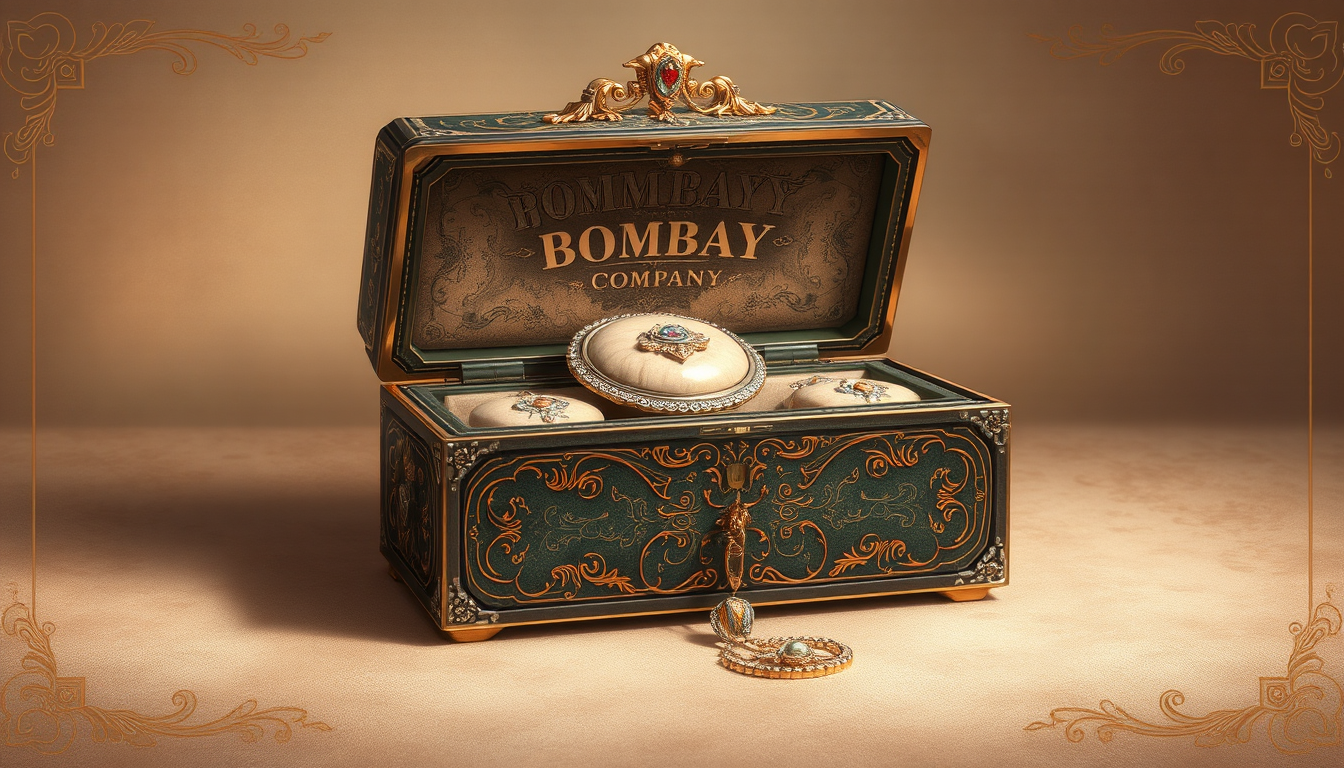
Good care will keep your jewelry box beautiful and valuable for many years. From our experience working with these pieces, we suggest a gentle and regular approach.
Avoid harsh chemicals completely, as they can damage the wood finish and the brass.
Routine Cleaning: A Step-by-Step Guide
-
Dusting: With a dry microfiber cloth, dust all surfaces lightly. Try and do this often to avoid accumulation.
-
Wood Surface Cleaning: For a deeper clean, mix a few drops of mild dish soap in a bowl of lukewarm water. Slightly dampen a soft cloth, making sure to wring it out until it’s almost dry. Gently wipe the wood surfaces.
-
Drying: Quickly wipe away any moisture with a clean, dry microfiber towel. Water should never be left to stand on the wood.
-
Brass Polishing: If you want to shine things up again, use a brass polish such as Brasso. First, test in a small spot that’s hard to see (such as the back of a hinge). Apply a small amount to a soft cloth, polish the brass and buff with a clean part of the cloth to remove excess polish. Q-tips work good for getting around pulls and knobs into the details.
Addressing Minor Repairs
-
Peeling Lining: If the felt or fabric lining is coming off, you may be able to fix it. Glue a little Aleene’s Fabric Fusion (I like to apply it with a toothpick or tiny brush) onto the lining, press it back into place and let it dry completely.
-
Minor Scratches: To fix small scratches in the wood finish, a wood touch-up marker can hlep so much. Pick out a marker that will be the same mahogany or cherry color as your box, and lightly color over the scratch.
For serious damage, like deep gouges, broken parts, or large areas of peeling veneer, we strongly suggest not trying to fix it yourself as you might cause more damage. In these cases, it’s best to talk to a professional furniture restorer who follows professional conservation guidelines for wooden artifacts.
The Enduring Appeal: Where to Find a Bombay Company Jewelry Box Today
Even decades after its peak, the Bombay Company jewelry box remains popular and sought-after. It’s an affordable way to start collecting vintage items, offering good craftsmanship, a timeless look, and a strong sense of nostalgia.
It wasn’t that it held jewelry, but rather that it represented a piece of design history that once graced millions of homes.
For those looking to buy or sell, the online resale market is your best resource.
-
Etsy & eBay: These are where you’ll find the biggest selection. You’re likely to find specific models at a range of conditions and prices here.
-
Facebook Marketplace & Poshmark: Both are great places to find local deals, and you might not have to pay shipping to receive your goodies. The selection varies more.
-
Chairish & 1stDibs:These sites offer higher-end, professionally checked or perfect-condition pieces, and usually higher prices.
Whether you are preserving an heirloom or you are a beginner to a legacy of own, the tradition of sharing the experience with a new Bombay Company juwelry box proves what’s past is present.
FAQ
-
How can I tell if my Bombay Company jewelry box is authentic?
Check the bottom for a gold or black sticker label with “The Bombay Company” printed on it. Also in many labels of 1990’s onwards we find the year of production and the country of manufacturing (usually Taiwan or Philippines). -
What is the value of a Bombay Company jewelry box in 2025?
The average genuinely Bombay Company jewelry box will sell for 25 to 150, depending on size, condition, complexity, and availability. In perfect condition larger armoires will sell for more money. -
When did The Bombay Company go out of business?
The Bombay Company filed for Chapter 11 bankruptcy the following year and liquidated all of its brick and morter store locations. The brand name was subsequently purchased and now only sells online, meaning that pre-2007 pieces are more valuable to collectors. -
What materials were used in Bombay Company jewelry boxes?
They were typically made of dark wood veneer (mahogany or cherry) with shiny brass hardware (pulls, knobs, hinges), and lined inside with felt or silk in dark green, black or deep red. -
How should I clean and maintain my Bombay Company jewelry box?
And now something a little easier to access a lot easier to clean: Brass hardware Use: Regular dusting: a microfiber cloth Deeper cleaning: a barely damp mild soap solution Hardware polish Keep away from harsh chemicals and never allow water to remain on the wood surface.


